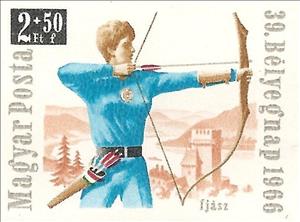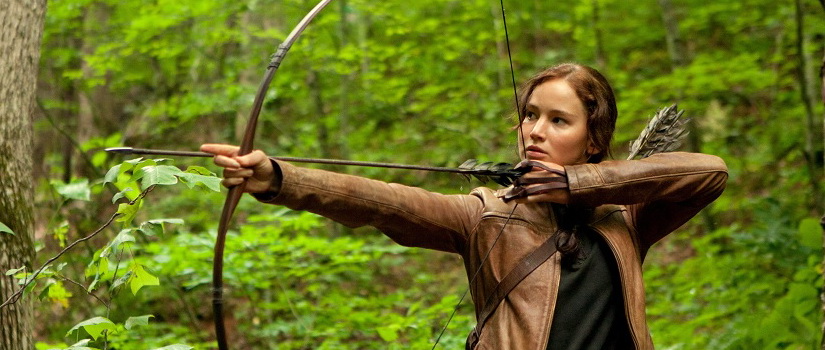Stamp: Stamp day 1966 (Hungary 1966)
Stamp day 1966 (Hungary 1966)
16 September (Hungary ) within release Stamp Day goes into circulation Stamp Stamp day 1966 face value 2+0.50 Hungarian forint
| Stamp Stamp day 1966 in catalogues | |
|---|---|
| Michel: | Mi: HU 2275B |
| Philatelia Hungarica Catalog: | PHu: HU 2324aV |
Stamp is horizontal format.
Also in the issue Stamp Day:
- Stamp - 39th Stamp Day - Woman archer face value 2+0.50;
- Stamp - 39th Stamp Day - Grape and lake Balaton face value 2+0.50;
- Stamp - 39th Stamp Day - Poppies and Diósgyőr Castle face value 2+0.50;
- Stamp - Russian Space Dogs (Canis lupus familiaris) face value 2+0.50;
- Souvenir Sheet - 39th Stamp Day face value 8+2;
- Mini Sheet - Stamp day 1966 face value 20*(2+0.50);
- Se-tenant - Stamp Day 1966 face value 8+2;
- Stamp - Stamp day 1966 face value 2+0.50;
- Stamp - Stamp day 1966 face value 2+0.50;
- Stamp - Stamp day 1966 face value 2+0.50;
- Stamp - Stamp day 1966 face value 2+0.50;
- Stamp - Stamp day 1966 face value 2+0.50;
- Stamp - Stamp day 1966 face value 2+0.50;
- Stamp - Stamp day 1966 face value 2+0.50;
- Stamp - Stamp day 1966 face value 2+0.50;
- Se-tenant - Stamp Day 1966 face value 4*(2+0.50);
Stamp Stamp day 1966 it reflects the thematic directions:
Archery is the sport, practice, or skill of using a bow to shoot arrows. The word comes from the Latin arcus, meaning bow. Historically, archery has been used for hunting and combat. In modern times, it is mainly a competitive sport and recreational activity. A person who practices archery is typically called an archer, bowman, or toxophilite
The domestic dog (Canis lupus familiaris or Canis familiaris) is a member of genus Canis (canines) that forms part of the wolf-like canids, and is the most widely abundant carnivore. The dog and the extant gray wolf are sister taxa, with modern wolves not closely related to the wolves that were first domesticated. The dog was the first domesticated species and has been selectively bred over millennia for various behaviors, sensory capabilities, and physical attributes. Their long association with humans has led dogs to be uniquely attuned to human behavior and they are able to thrive on a starch-rich diet that would be inadequate for other canid species. Dogs vary widely in shape, size and colours. Dogs perform many roles for people, such as hunting, herding, pulling loads, protection, assisting police and military, companionship and, more recently, aiding handicapped individuals. This influence on human society has given them the sobriquet "man's best friend".
A flower, sometimes known as a bloom or blossom, is the reproductive structure found in plants that are floral (plants of the division Magnoliophyta, also called angiosperms). The biological function of a flower is to effect reproduction, usually by providing a mechanism for the union of sperm with eggs. Flowers may facilitate outcrossing (fusion of sperm and eggs from different individuals in a population) or allow selfing (fusion of sperm and egg from the same flower). Some flowers produce diaspores without fertilization (parthenocarpy). Flowers contain sporangia and are the site where gametophytes develop. Many flowers have evolved to be attractive to animals, so as to cause them to be vectors for the transfer of pollen. After fertilization, the ovary of the flower develops into fruit containing seeds. In addition to facilitating the reproduction of flowering plants, flowers have long been admired and used by humans to beautify their environment, and also as objects of romance, ritual, religion, medicine and as a source of food.
In botany, a fruit is the seed-bearing structure in flowering plants (also known as angiosperms) formed from the ovary after flowering. Fruits are the means by which angiosperms disseminate seeds. Edible fruits, in particular, have propagated with the movements of humans and animals in a symbiotic relationship as a means for seed dispersal and nutrition; in fact, humans and many animals have become dependent on fruits as a source of food. Accordingly, fruits account for a substantial fraction of the world's agricultural output, and some (such as the apple and the pomegranate) have acquired extensive cultural and symbolic meanings. In common language usage, "fruit" normally means the fleshy seed-associated structures of a plant that are sweet or sour, and edible in the raw state, such as apples, bananas, grapes, lemons, oranges, and strawberries. On the other hand, in botanical usage, "fruit" includes many structures that are not commonly called "fruits", such as bean pods, corn kernels, tomatoes, and wheat grains. The section of a fungus that produces spores is also called a fruiting body.




